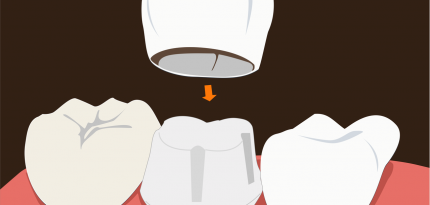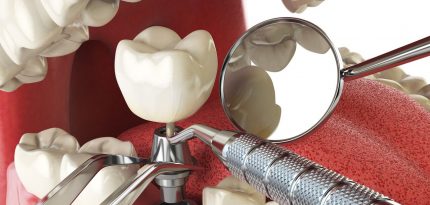What are dental crowns?
A dental crown is a tooth-shaped “cap” that is cemented onto existing teeth or implants. Crowns can be used to strengthen and protect a damaged or cracked tooth, and/or after a tooth has had root canal treatment done, and/or improve its appearance, shape or alignment. A crown can also be placed on top of an implant to provide a tooth-like shape and structure for function.

When do you need a dental crown?
- To protect a weak, cracked or damaged tooth from further breakage
- To restore a severely worn or cracked tooth
- To reinforce a tooth with a large filling
- To reinforce a tooth that has had root canal treatment
- To cover poorly shaped or severely discolored teeth
- To hold a dental bridge in place
- To cover a dental implant
What are dental crowns made of?
The most popular type of dental crown in the market today is Zirconia. Other materials include gold and metal alloys, other types of porcelain (lithium disilicate) or resin-ceramic hybrids. Porcelain can also be combined with zirconia or metal bases.

Dental Crowns at Elite Dental
Before any dental treatment can proceed, it is extremely important to first consult us to assess if your tooth would indeed benefit from a dental crown.
Step 1: Preparing your Tooth
First, your tooth and the surrounding tissues will be numbed with a local anaesthetic. Decay and any defective old fillings will then be removed from your tooth. The cavity is cleaned and refined. A base filling is placed to seal the tooth from bacteria and to regularize the tooth shape.
The tooth is then trimmed so the new crown can fit over it and there is sufficient space for the chosen crown material. A mould or digital scan of the tooth is then made and transferred to the dental laboratory. A temporary crown will be made to protect your tooth in the meantime.
Step 2: Fitting of the crown
Once the final crown is ready, the temporary crown will be removed. The crown is then cemented onto your tooth and excess cement will then be removed. We will then check your bite to make sure it is balanced before we give the new crown a final polish.
We work with a talented team of ceramic artists who will make sure the colour, shape and surface texture of the new crown is exactly as what we have designed and prescribed , to create a crown that is extremely natural looking.
[su_button url="other_services" style="default" background="#003853;" size="6" wide="yes" center="yes" radius="0"]TO SERVICES[/su_button]








